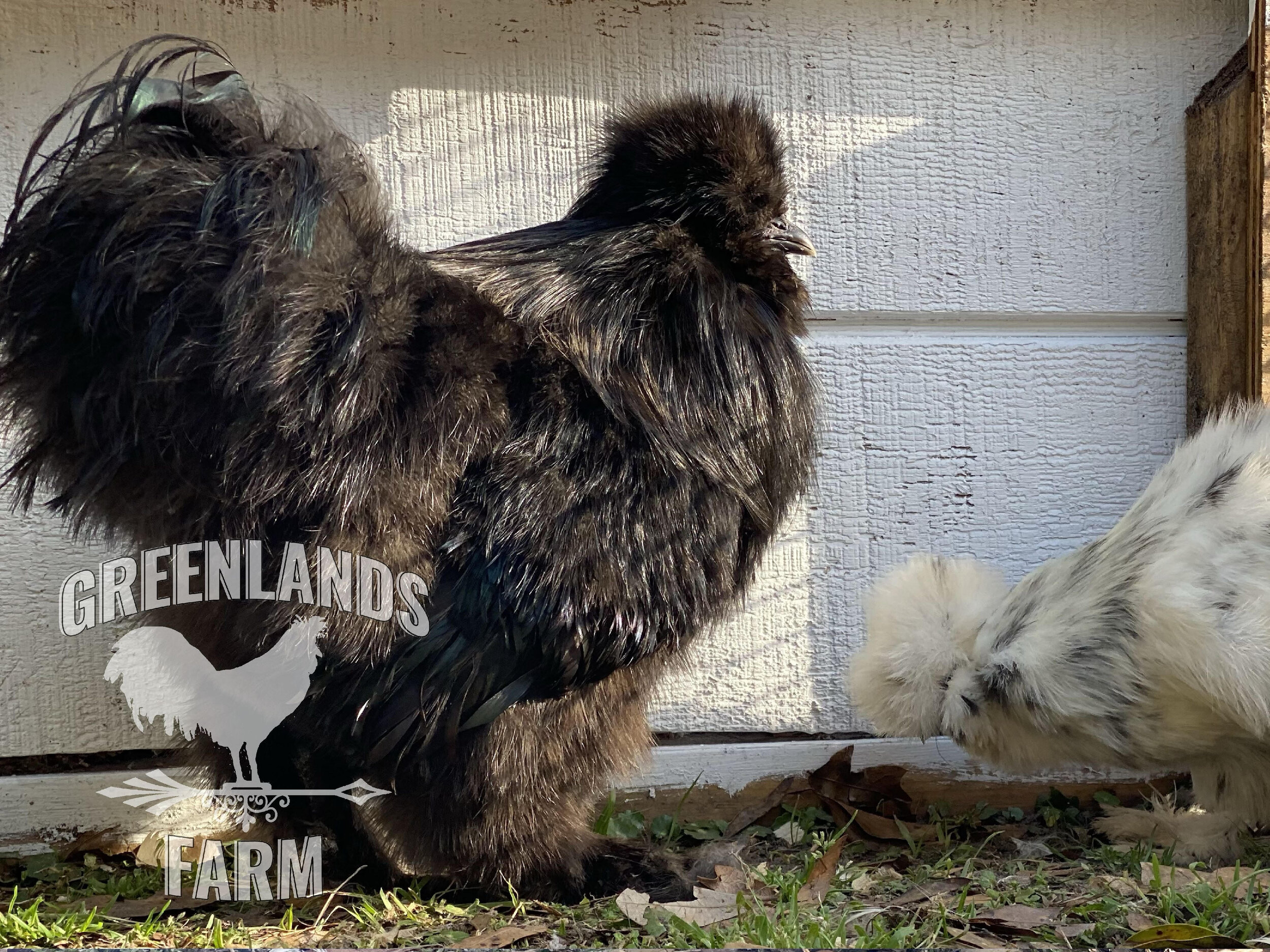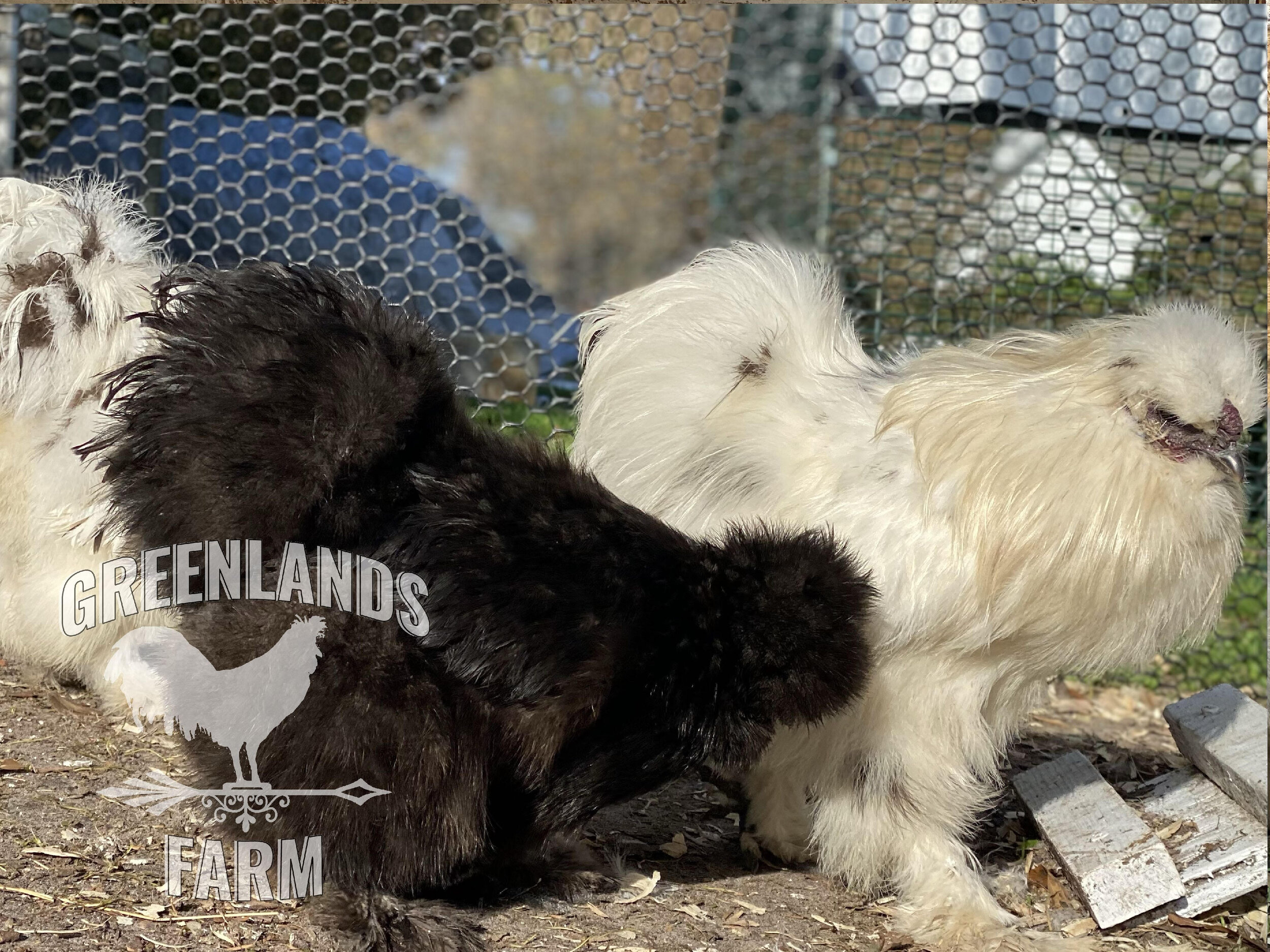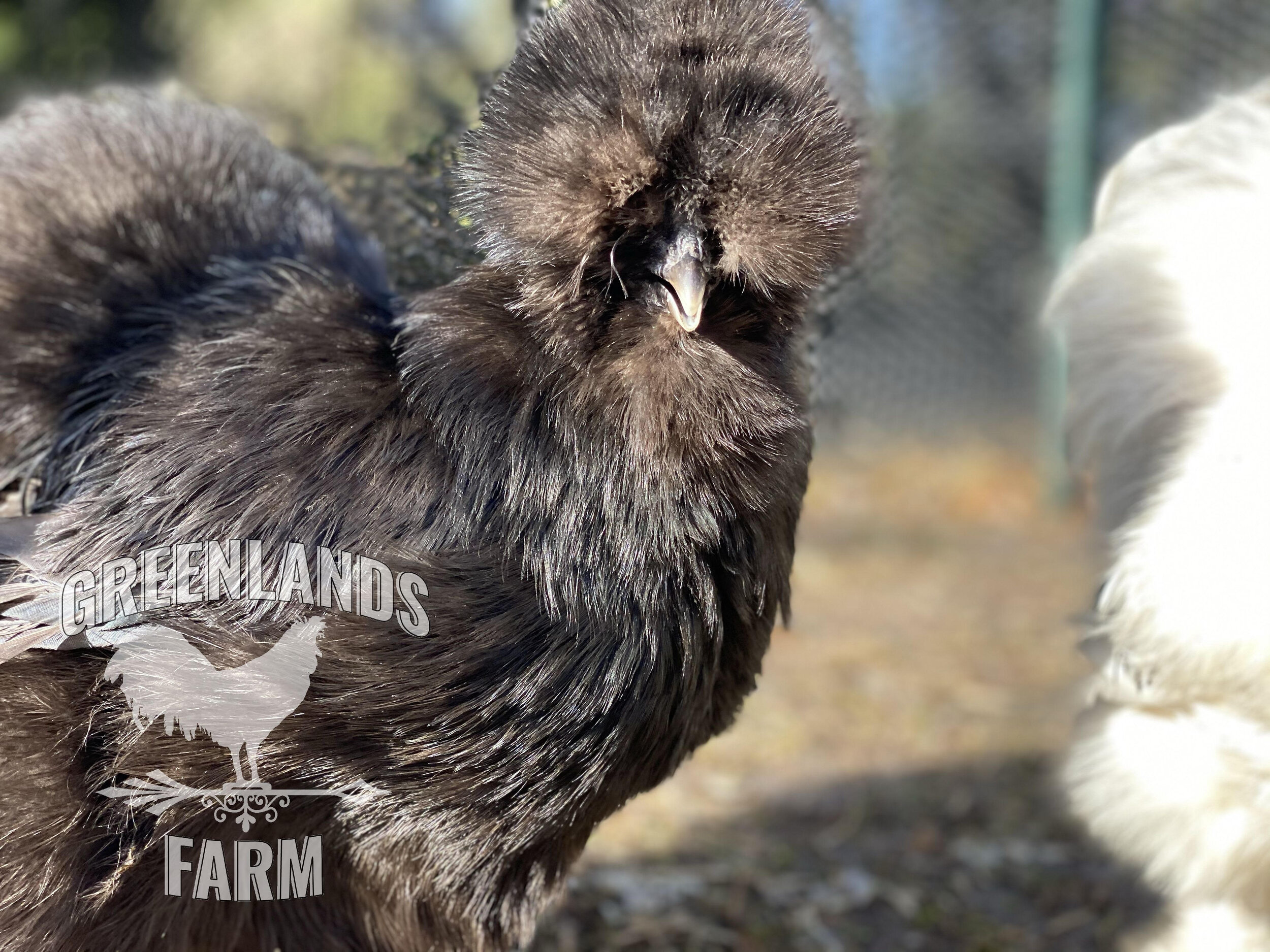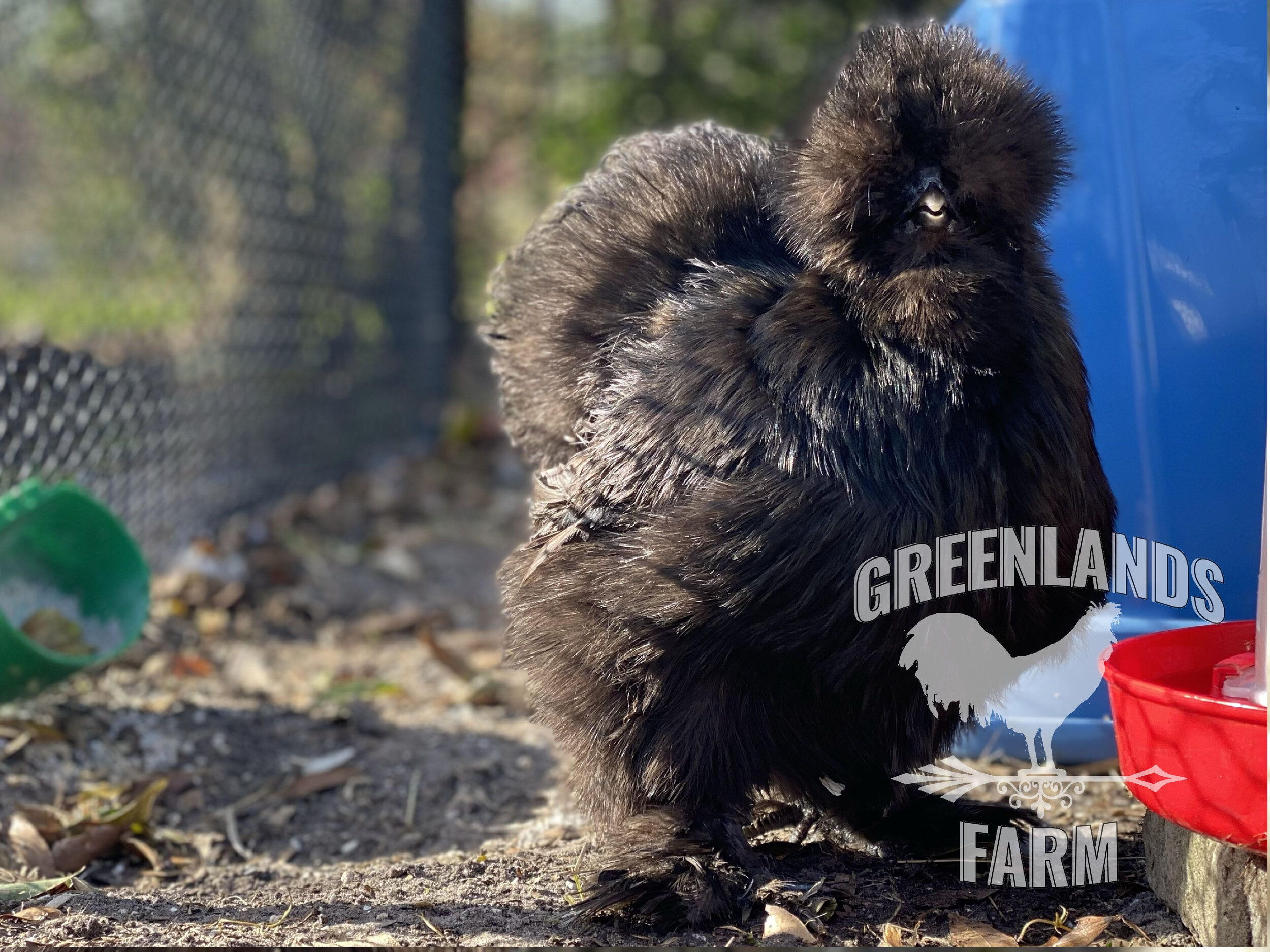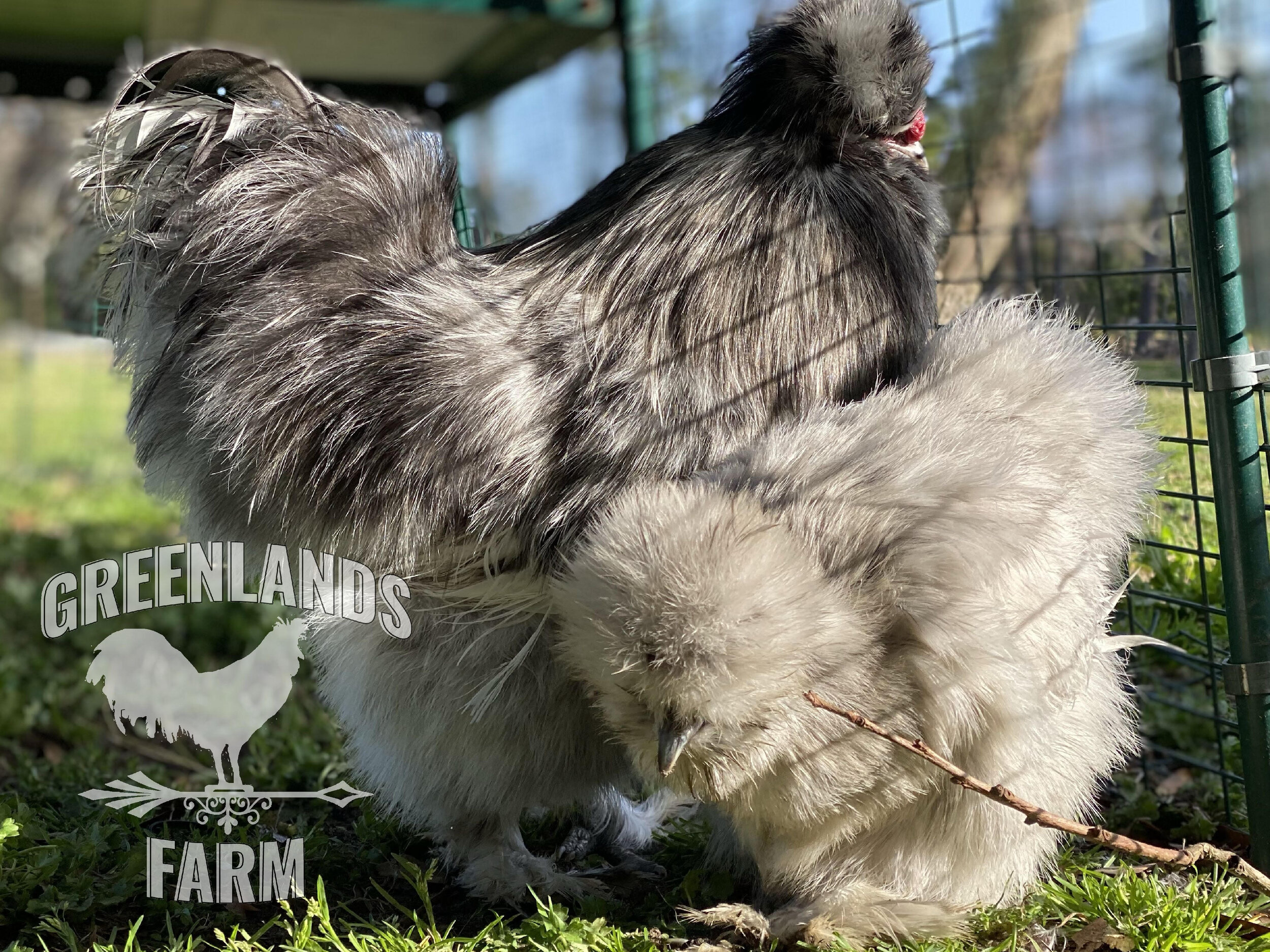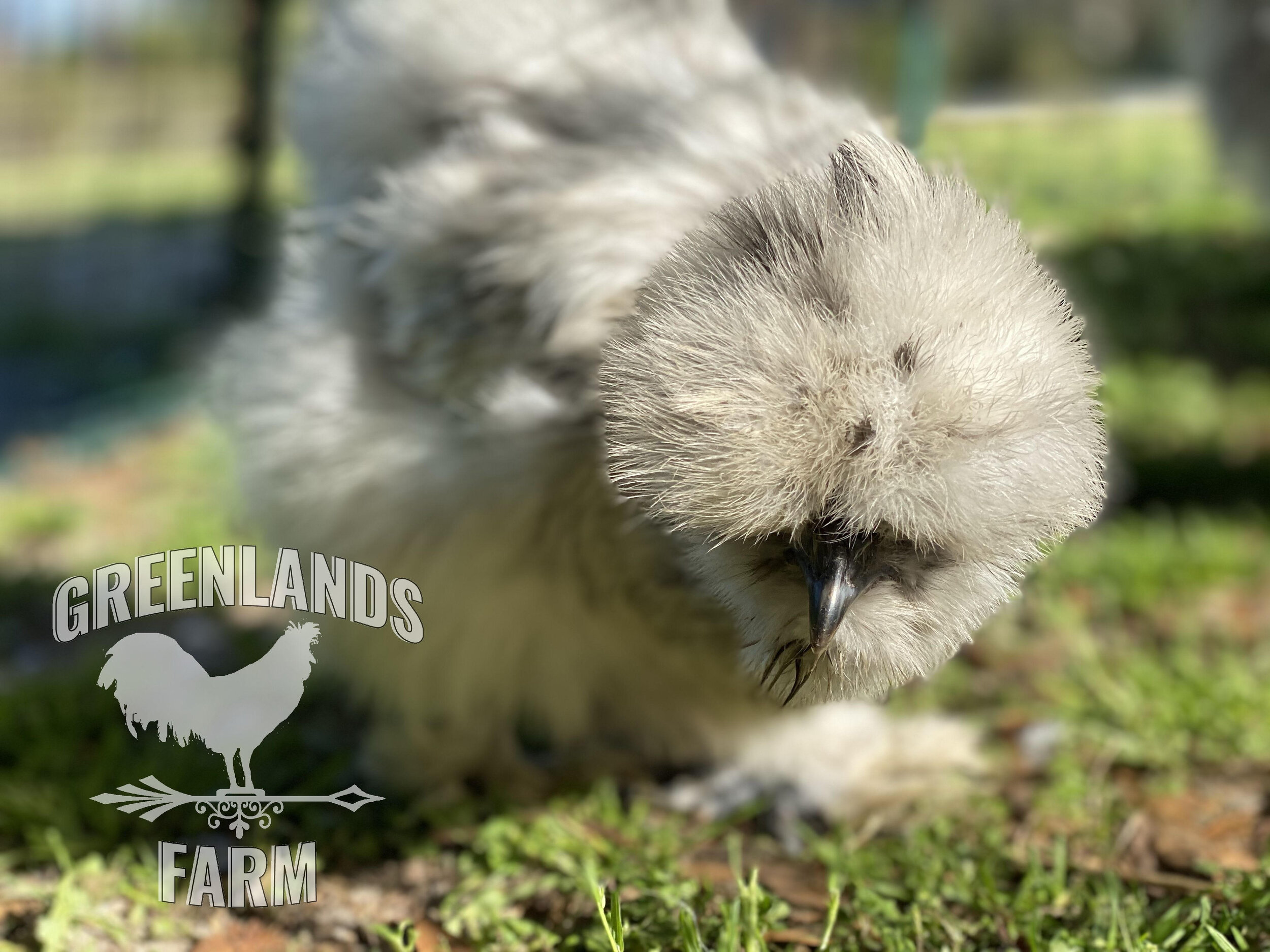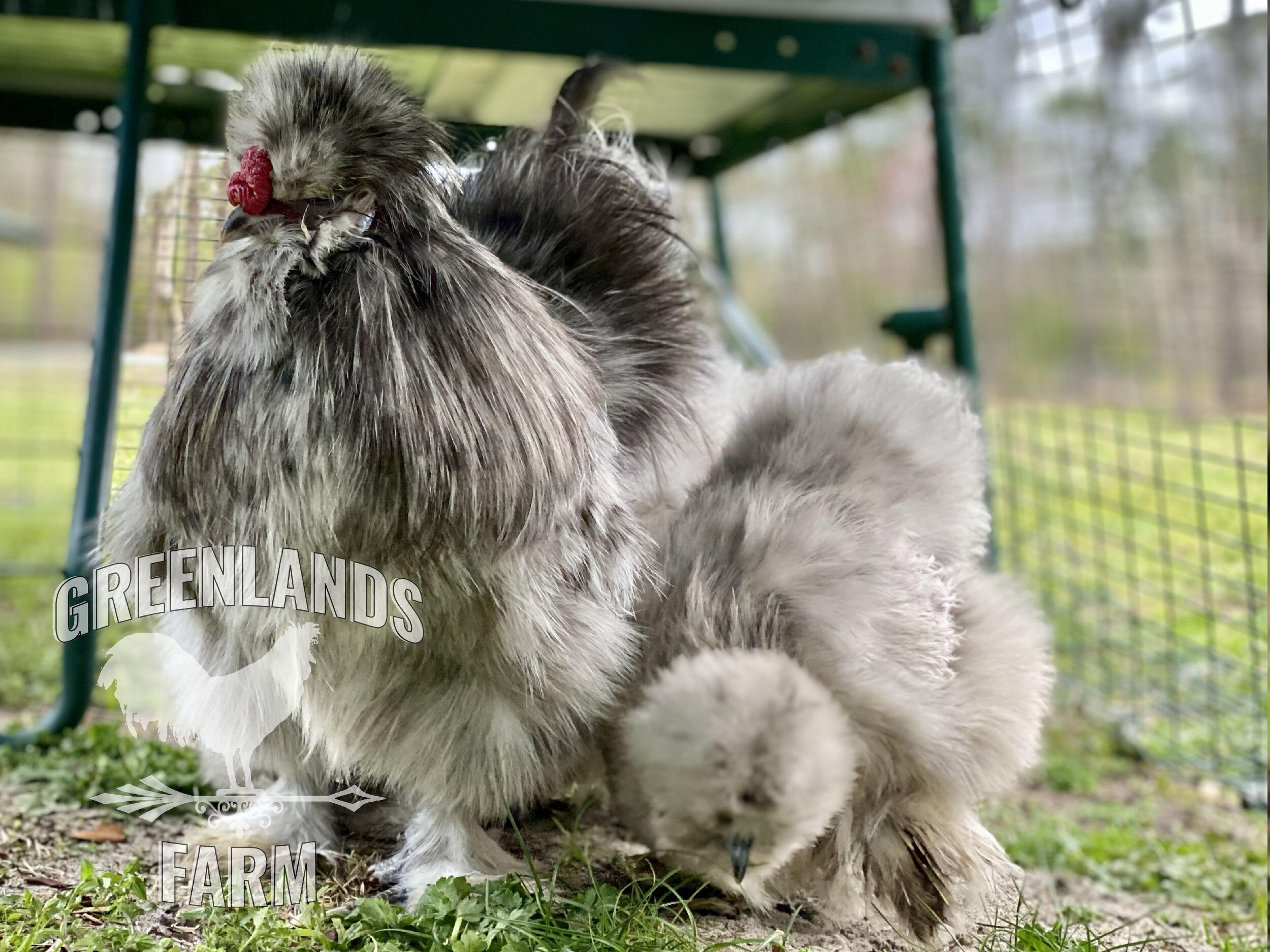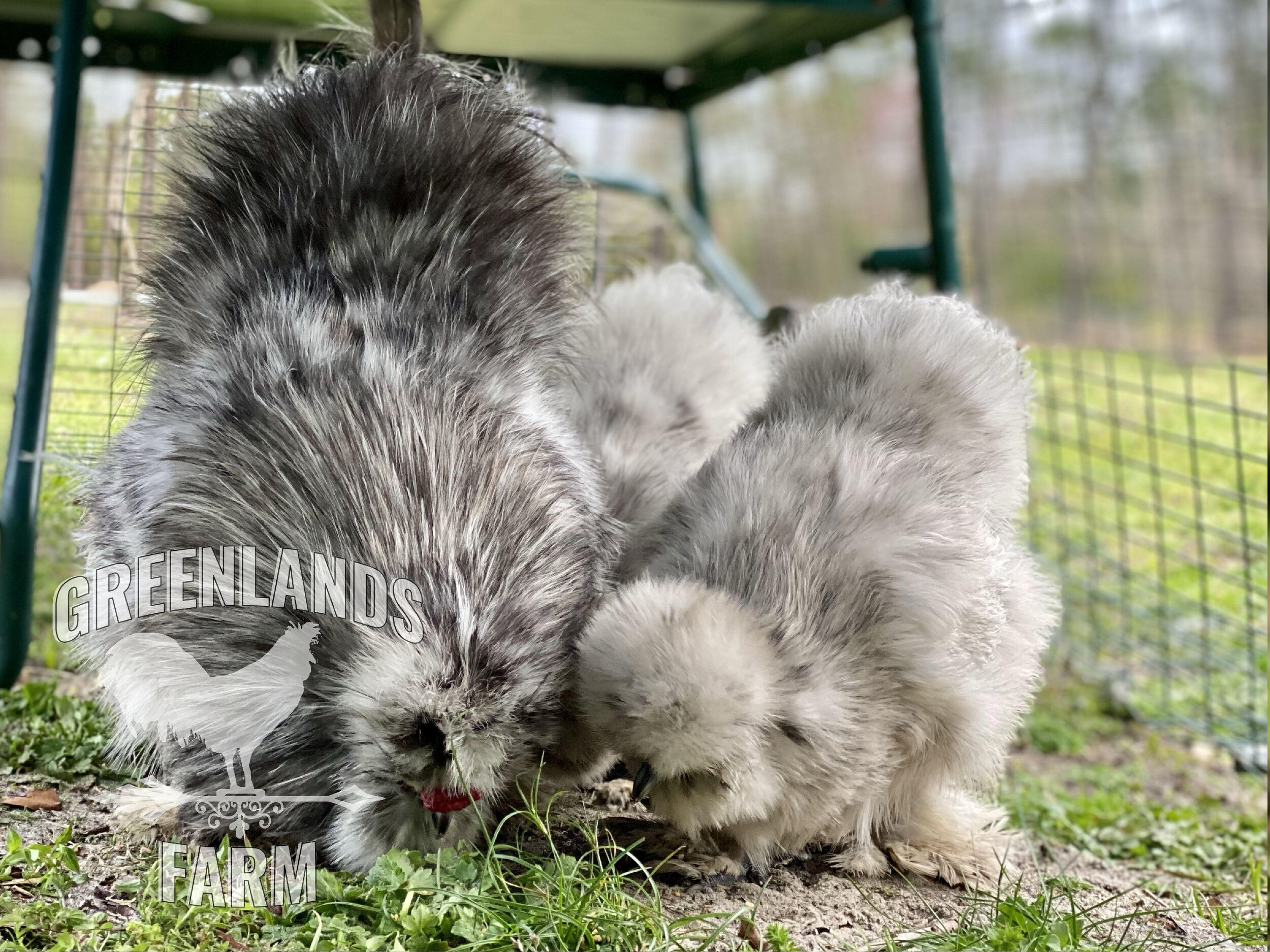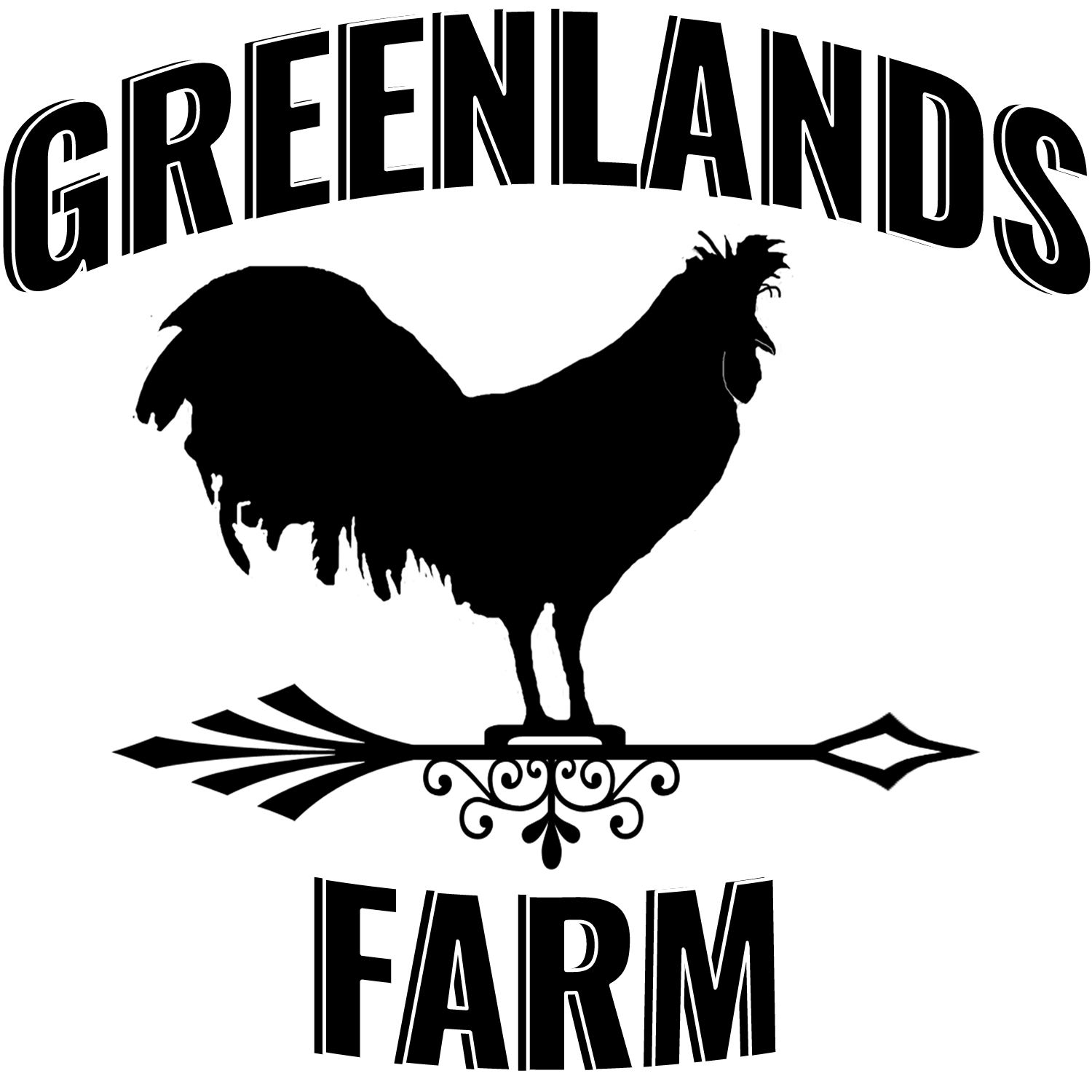Bearded Silkie
WE NO LONGER BREED SILKIES ON A REGULAR BASIS - WE MAY OCCASIONALLY HAVE SOME CHICKS IN THE SPRING FOR SALE. ALTHOUGH THEY ARE FROM GOOD BREEDING STOCK, THEY WILL NOT BE SEPARATED FOR COLOR GROUPS THEREFORE THEY WILL ONLY BE PET QUALITY.
If you're looking for a friendly, chatty, sweet-natured breed as a first chicken for your children or a companion for yourself, then the Siklie is for you.The Silkie (sometimes spelled Silky) is a breed of chicken named for its atypically fluffy plumage, which is said to feel like silk and satin. The breed has several other unusual qualities, such as black skin and bones, blue earlobes, and five toes on each foot, whereas most chickens only have four. Silkies are well known for their calm, friendly temperament. It is among the most docile of poultry. Hens are also exceptionally broody, and care for young well. Silkie chickens are very easy to keep as pets and suitable for children! Due to their delightful temperament, compact size, tameness, and cuddle factor, kids and parents alike absolutely love these chickens. Just like a fuzzy little kitten, or playful puppy, these chickens will hop up into your lap and snuggle the hours away.
We have bearded silkies in colors of blue, black, and splash. We have do see slight leakage in the splash, but it doesn’t show up often for us. We are continuously working on our breed quality. We are proud members of the American Silkie Bantam Club.
Greenlands Farm is a member of the National Poultry Improvement Plan (NPIP).
Our NPIP status is U.S. Pollorum-Typhoid Clean, AI Clean, and Salmonella Monitored.
HATCHING EGGS
We are no longer offering hatching eggs in this breed.
LIVE BIRDS
(shipping not available)
We may have some chicks for local pickup. Follow our social media for updates at https://www.facebook.com/greenlandsfarm.animals
History
It is unknown exactly where or when these fowl with their singular combination of attributes first appeared, but the most well documented point of origin is ancient China (hence another occasionally encountered name for the bird, Chinese silk chicken). Other places in Southeast Asia have been named as possibilities, such as India and Java. The earliest surviving written account of Silkies comes from Marco Polo, who wrote of a "furry chicken" in the 13th century during his travels in Asia. In 1598, Ulisse Aldrovandi, a writer and naturalist at the University of Bologna, Italy, published a comprehensive treatise on chickens which is still read and admired today. In it, he spoke on "wool-bearing chickens" and ones "clothed with hair like that of a black cat".
Silkies most likely made their way to the West via the Silk Route and maritime trade. The breed was recognized officially in North America with acceptance into the Standard of Perfection in 1874. Once Silkies became more common in the West, many myths were perpetuated about them. Early Dutch breeders told buyers they were the offspring of chickens and rabbits, while sideshows promoted them as having actual mammalian fur.
In the 21st century, Silkies are one of the most popular and ubiquitous ornamental breeds of chicken. They are often kept as ornamental fowl or pet chickens by backyard keepers, and are also commonly used to incubate and raise the offspring of other chickens and waterfowl like ducks and geese and game birds such as quail and pheasants.
